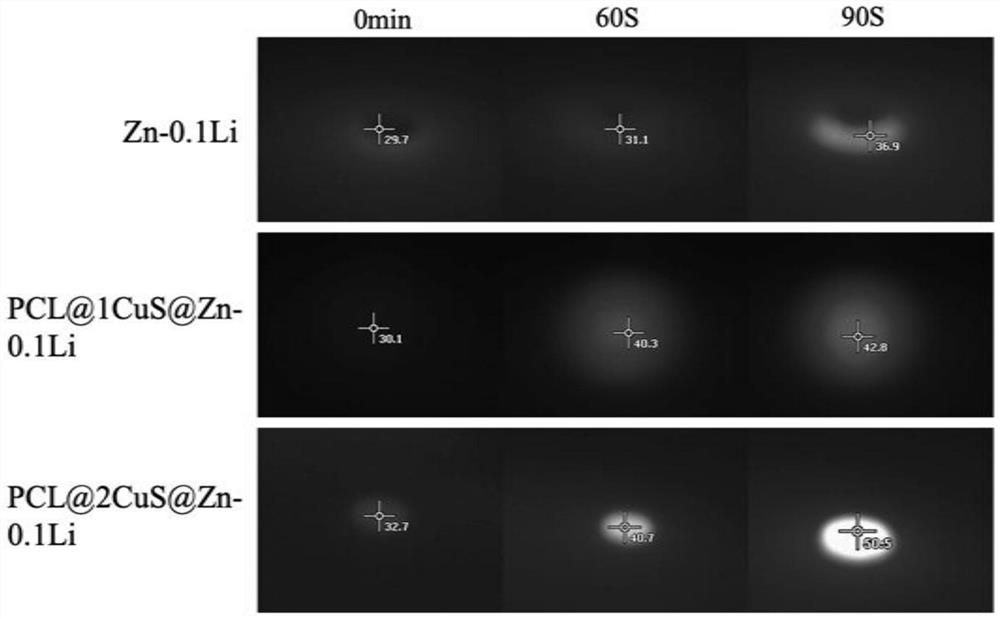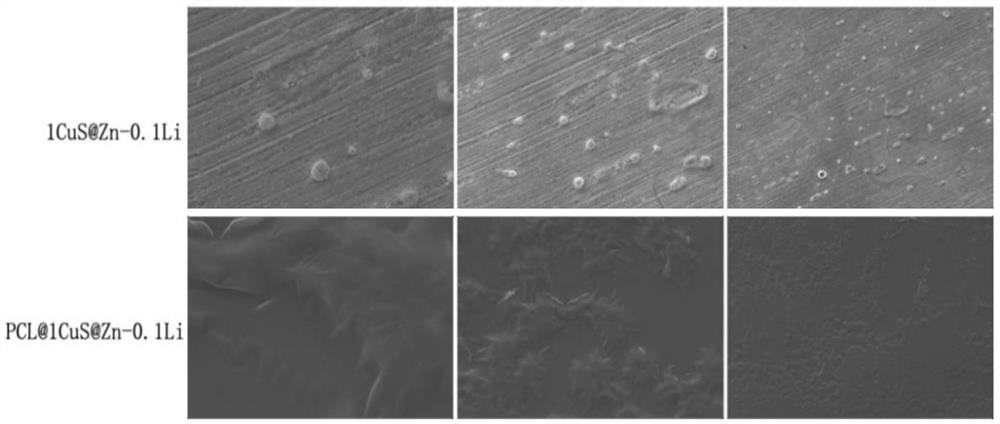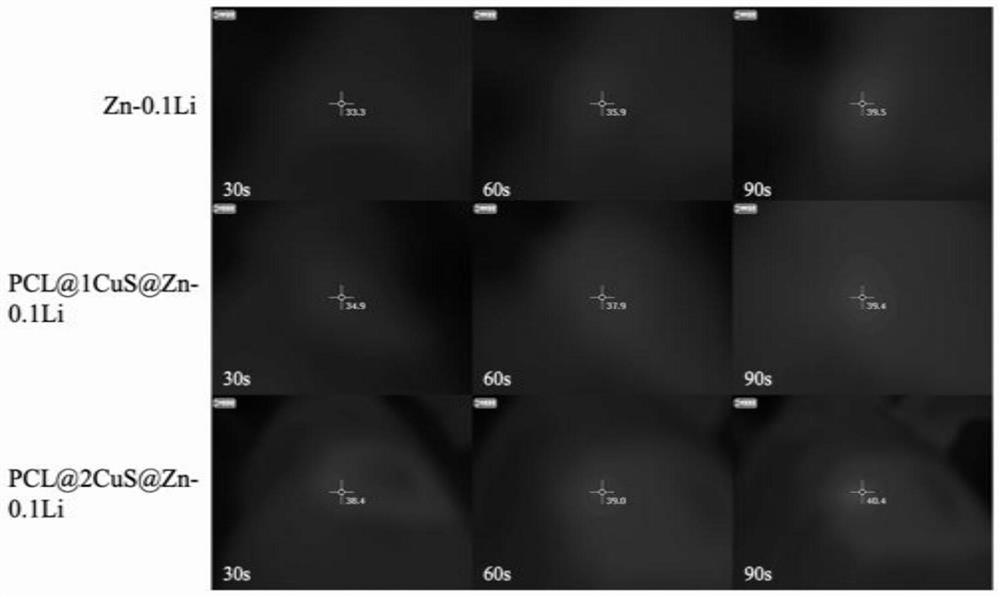A kind of degradable zinc-lithium alloy surface coating and preparation method and use thereof
A surface coating and alloy technology, which is applied in the field of degradable zinc-lithium alloy surface coating and its preparation, can solve the problems of cytotoxicity and other problems, and achieve the effects of promoting angiogenesis, promoting osteogenic differentiation, and improving bone regeneration
- Summary
- Abstract
- Description
- Claims
- Application Information
AI Technical Summary
Problems solved by technology
Method used
Image
Examples
Embodiment 1
[0025] A preparation method of a degradable zinc-lithium alloy surface coating, a composite material prepared by using the adhesion mechanism of dopamine and its derivatives, the base of which is a biodegradable and degradable zinc-lithium alloy, and the middle is a layer with light The thermal effect of photothermal coupling agent copper sulfide (CuS) nanoparticles, the surface is a layer of photocured stable coating photocurable polycaprolactone (EFL-PCLMA). Among them, the zinc substrate can degrade and release zinc ions to promote the osteogenic differentiation of human bone marrow mesenchymal stem cells (hBMMSCs). The temperature for osteogenic differentiation of mesenchymal stem cells is (40 ± 0.5) °C; the stable coating on the outer surface can effectively control the heating rate of the material. When the material is irradiated with near-infrared light, the material will melt during the heating process and gradually expose the material substrate, thereby regulating the ...
Embodiment 2
[0034] The steps of preparing the photothermal responsive coating containing copper sulfide nanoparticles on the surface of Zn-0.1Li alloy are as follows:
[0035] (1) The extruded Zn-0.1Li alloy bar with a diameter of 10 mm is selected, and it is cut into a circle with a thickness of 1.5 mm by mechanical processing technology. The metallographic sandpaper was polished step by step, then ultrasonically cleaned in acetone and anhydrous ethanol for 20 min, air-dried at room temperature, and stored in a vacuum drying oven;
[0036](2) Preparation of copper sulfide nanoparticles: 0.6 mmol copper chloride dihydrate (CuCl 2 ·2H 2 O) and 0.408 mmol sodium citrate (C 6 H 5 Na 3 O 7 ) into 180 mL of deionized water, followed by dropwise addition of 20 mL of sodium sulfide nonahydrate (Na 2 S·9H 2 O), stirred at room temperature for 5 min, and then heated the reaction mixture to 90 °C for 15 min to complete the preparation of copper sulfide nanoparticles.
[0037] (3) Preparatio...
PUM
 Login to View More
Login to View More Abstract
Description
Claims
Application Information
 Login to View More
Login to View More - R&D
- Intellectual Property
- Life Sciences
- Materials
- Tech Scout
- Unparalleled Data Quality
- Higher Quality Content
- 60% Fewer Hallucinations
Browse by: Latest US Patents, China's latest patents, Technical Efficacy Thesaurus, Application Domain, Technology Topic, Popular Technical Reports.
© 2025 PatSnap. All rights reserved.Legal|Privacy policy|Modern Slavery Act Transparency Statement|Sitemap|About US| Contact US: help@patsnap.com



